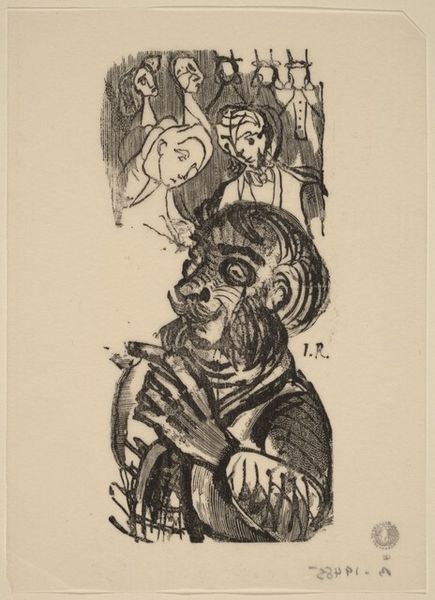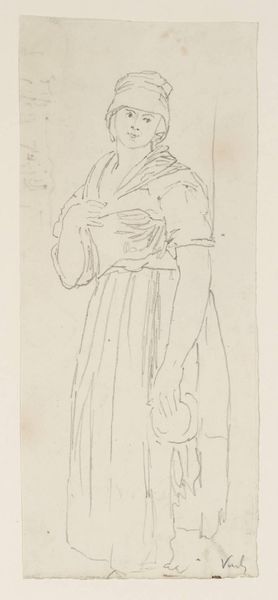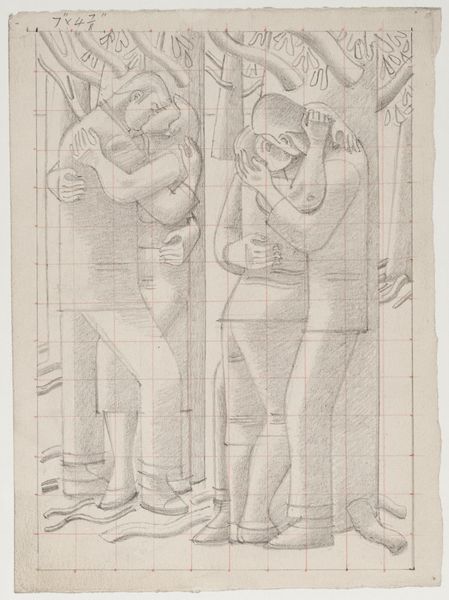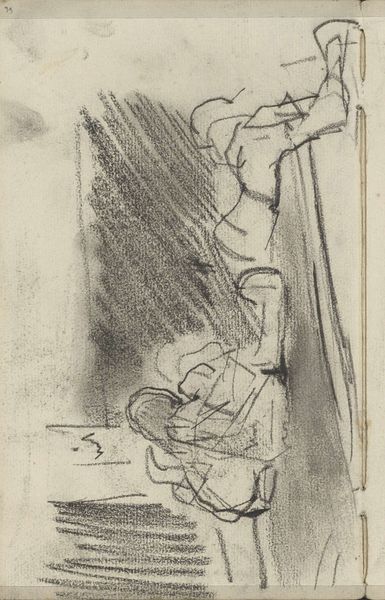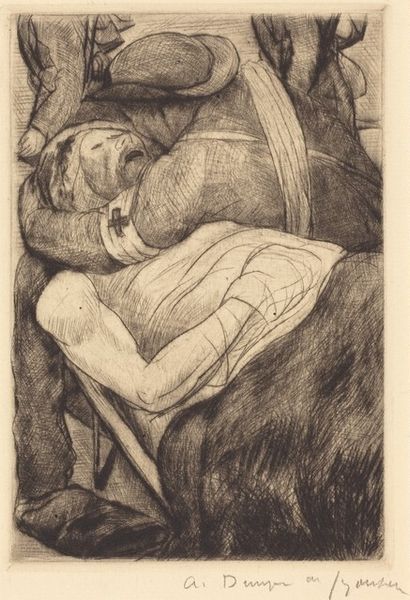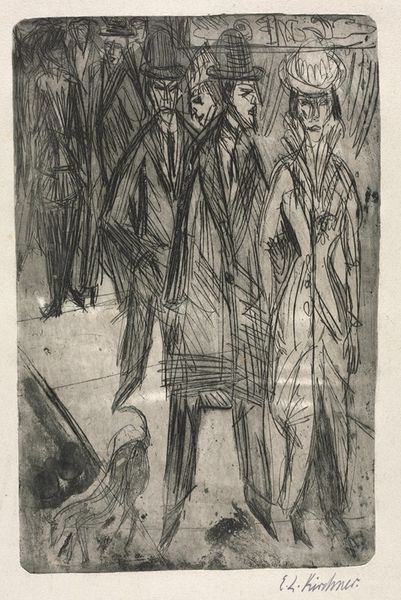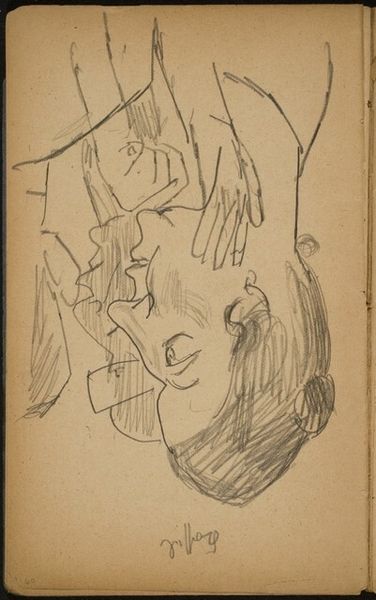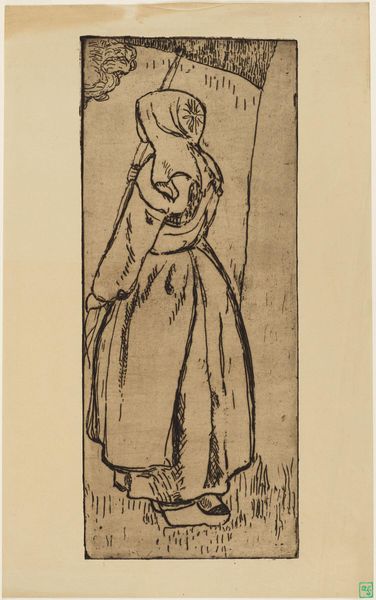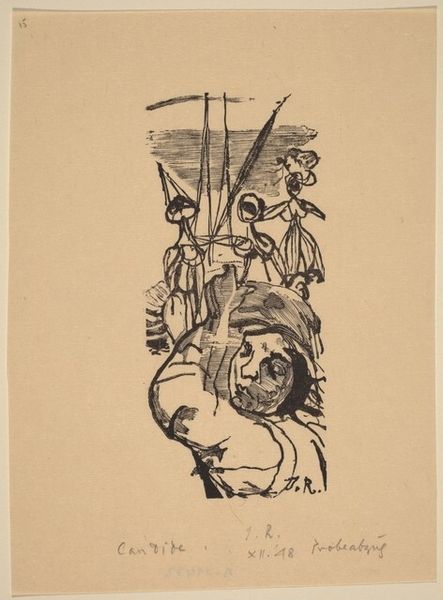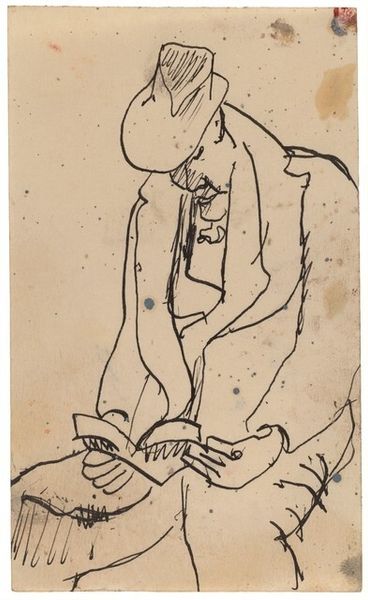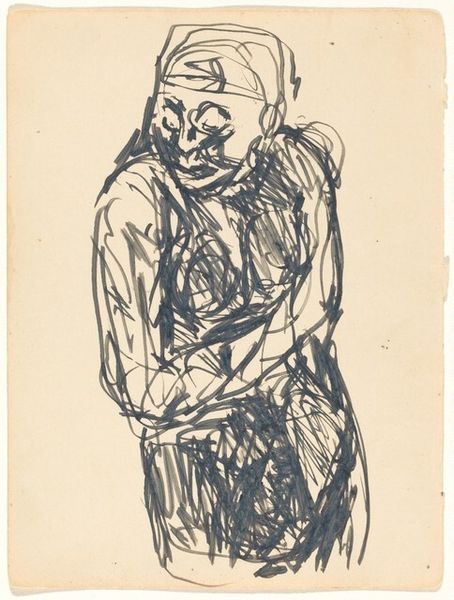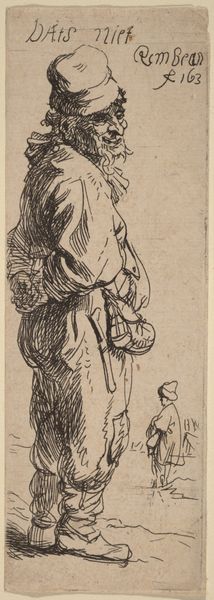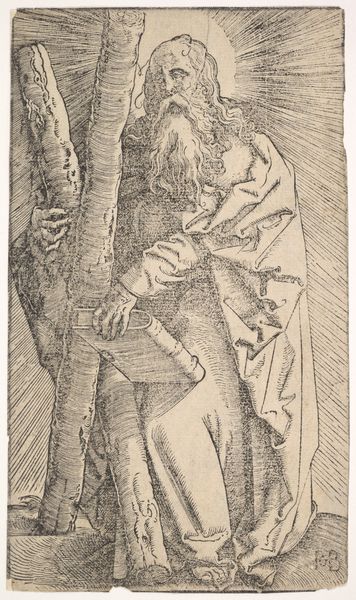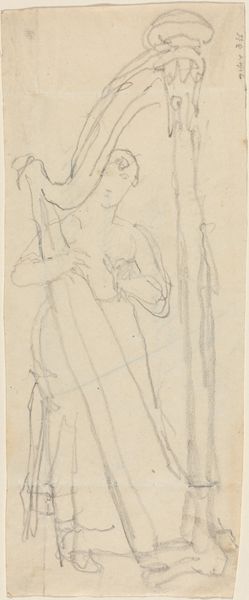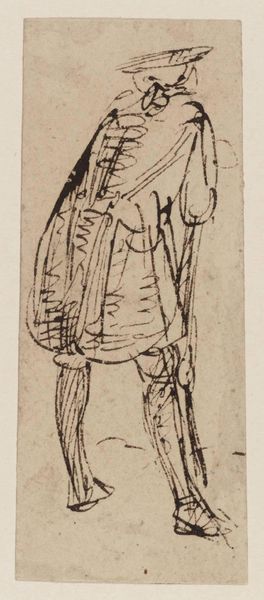
drawing, print, etching, ink
#
portrait
#
drawing
# print
#
etching
#
pencil sketch
#
figuration
#
ink
#
group-portraits
#
expressionism
#
portrait drawing
Dimensions: plate: 23.2 x 14.7 cm (9 1/8 x 5 13/16 in.) support: 24.3 x 15.6 cm (9 9/16 x 6 1/8 in.)
Copyright: National Gallery of Art: CC0 1.0
Curator: This etching from 1927 is titled "Evil-speaking Little Women" by Samuel Jessurun de Mesquita. It's an intriguing composition executed with ink on paper, very much a work of the Expressionist style. Editor: The moment I saw this, I felt a deep sense of unease. The figures are skeletal, almost like specters. Those eyes… they pierce right through you. There is a sort of cruelty suggested by the surrounding caricatures as they look at the veiled ones in front. Curator: Mesquita's work is often infused with social commentary, wouldn't you agree? Consider the historical backdrop of the late 1920s in Europe, particularly the rise of increasingly hostile discourse across various segments of the society. It’s plausible that Mesquita uses this group portrait to critique those kinds of dynamics at play, making “women” a universal theme for outcasts and disempowered social groups, the victims of calumny. Editor: Absolutely. These skeletal figures are definitely an expression of an outcast experience, but beyond societal context, it strikes me on a deeply emotional level, too. The imagery used brings to mind age-old associations between masks and the concealing of intention. They stand back to haunt those who stand forward. Those grimaces lurking in the back could stand for any disfigured state of the soul. This piece reads like a visual embodiment of the darker sides of human interaction – alienation and betrayal. Curator: An acute observation. The grotesque visages clearly amplify feelings of repulsion. Considering the era's experimentation with psychological portrayals, one can interpret it as an exploration of hidden emotions made bare by an artist navigating turbulent times. Editor: I see here a timeless echo: those who are ostracized will find that those who brought it on themselves will in the end live with their ugliness forever engraved on their faces. Curator: A rather poignant way to sum up Mesquita’s commentary and quite incisive for a deeper appreciation of the enduring power of symbolic imagery when dealing with human frailties. Editor: Well, in that moment, that's what it told me it meant.
Comments
No comments
Be the first to comment and join the conversation on the ultimate creative platform.
